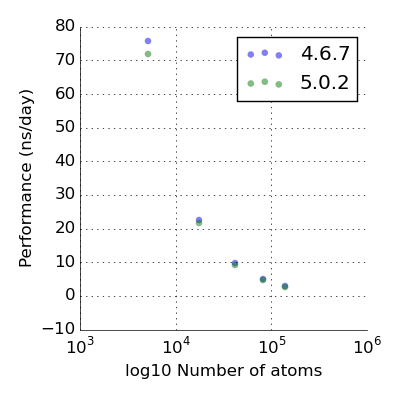Native contact (Q) biasing in GROMACS and plumed2
Fraction of native contacts is a pretty darn good coordinate for looking at protein folding, definitely when it comes to small proteins. Just have a look: http://www.pnas.org/content/110/44/17874.abstract Fraction of native contacts can be used to analyze long, unbiased MD runs – like those from DESRES – or in biasing simulations. But how does it fare when used in biasing? Well I don't know – but you can now find out by yourself! Either in umbrella sampling or metadynamics – or a method of your choice that doesn't use energy as your collective variable. Here, I'm happy to report that I incorporated an implementation of native contact CV into plumed2 – an enhanced sampling package that can be used with a number of popular MD simulation engines. The pull request is now closed https://github.com/plumed/plumed2/pull/177 and it's likely that the next release of plumed2 will include this. "Tutorial" is a regression test in plumed2 sources regtest/basic/rt...

